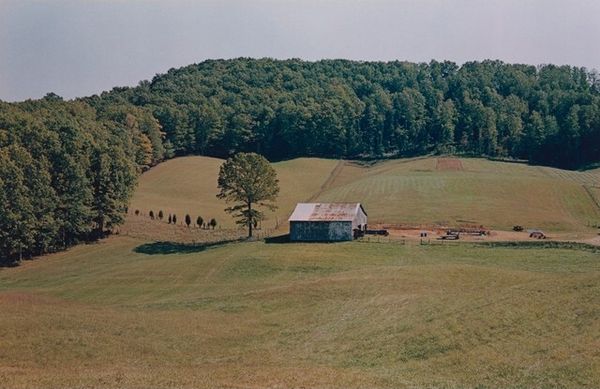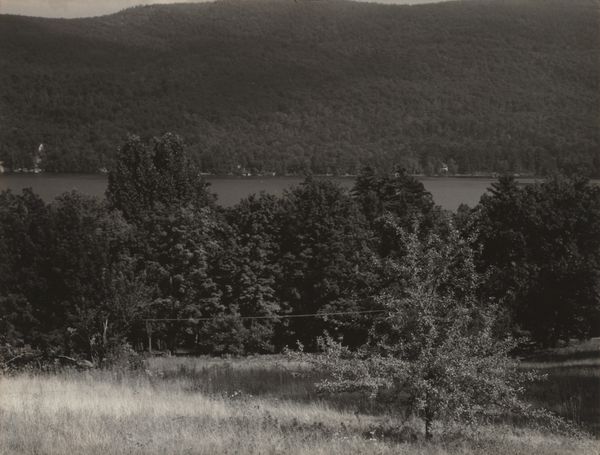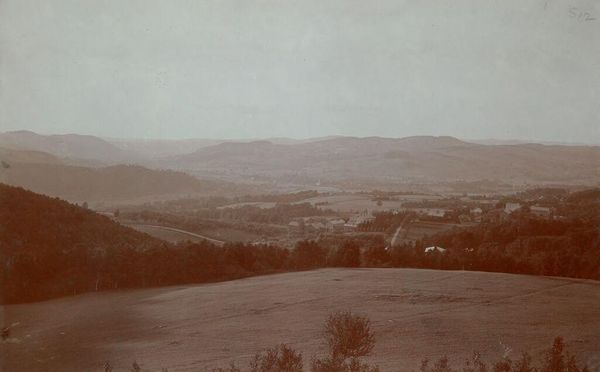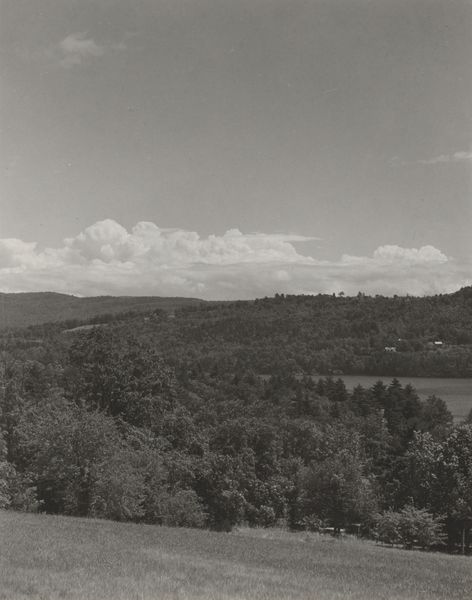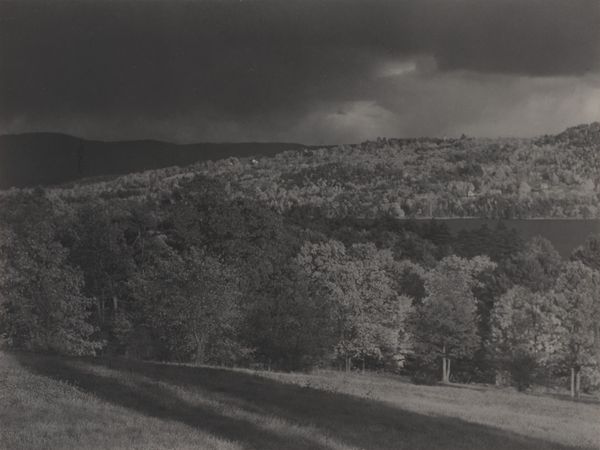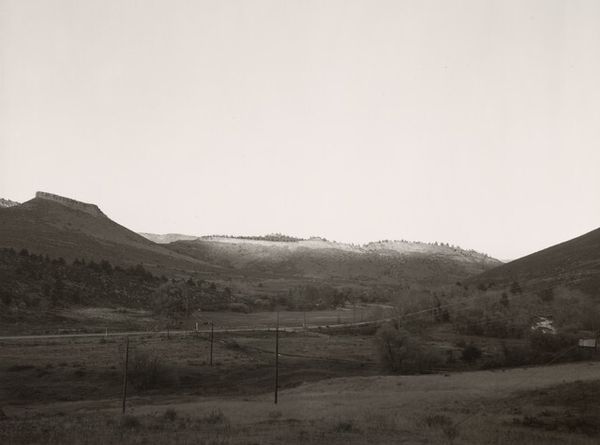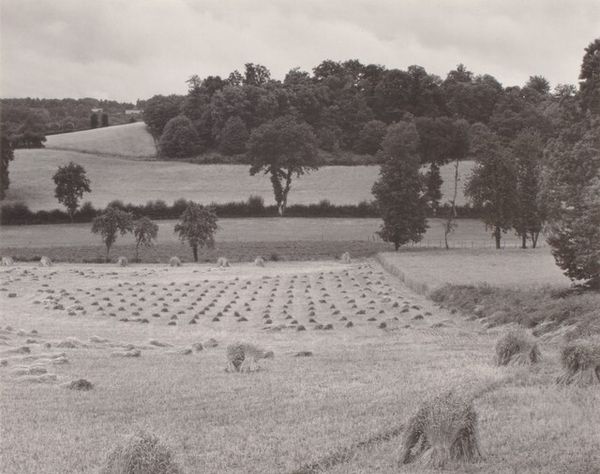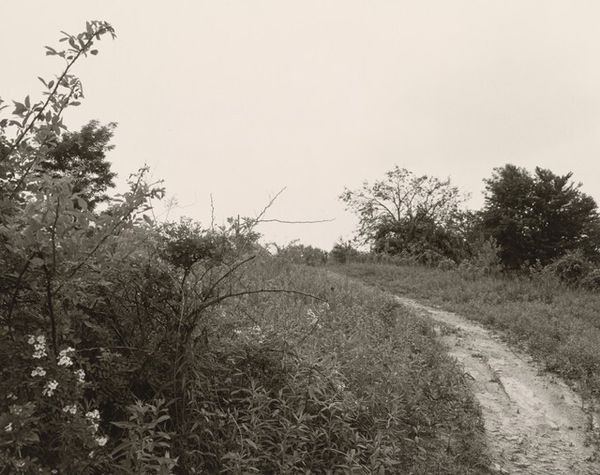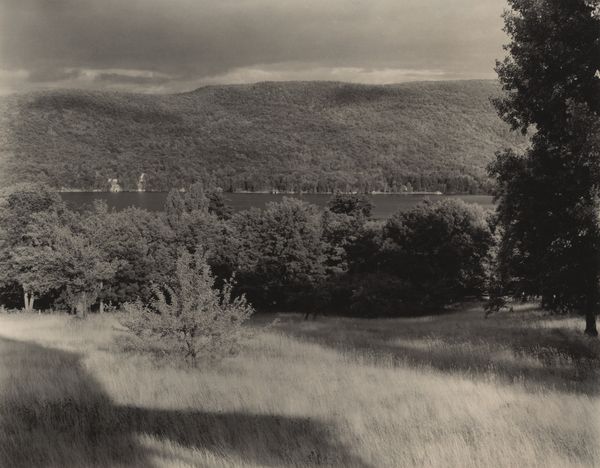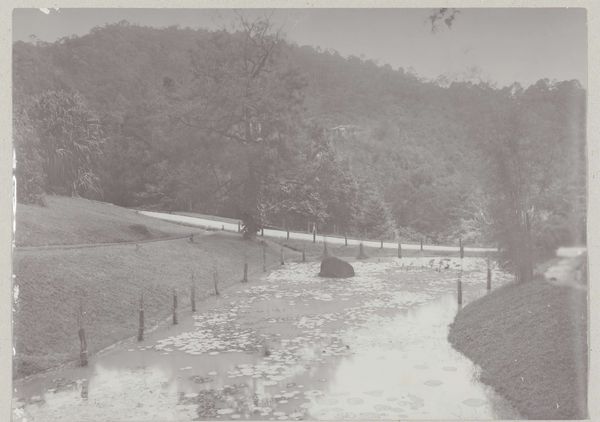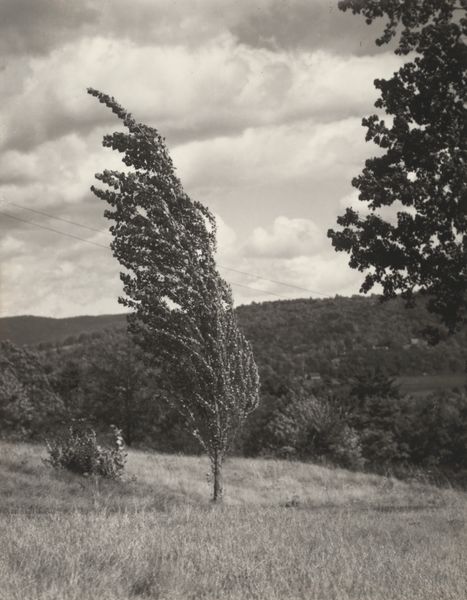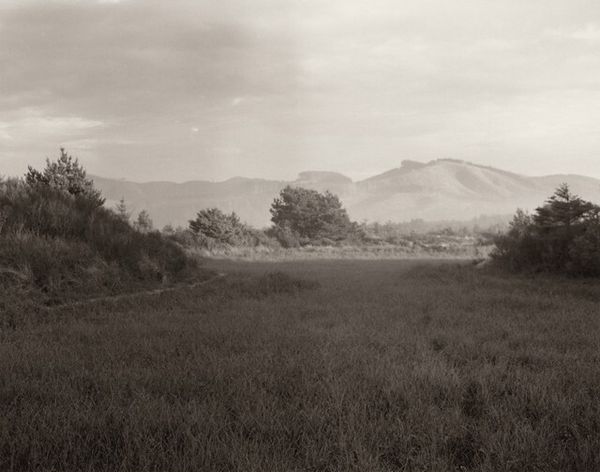
Dimensions: image: 23.5 × 35.88 cm (9 1/4 × 14 1/8 in.) sheet: 40.64 × 50.8 cm (16 × 20 in.)
Copyright: National Gallery of Art: CC0 1.0
Editor: This photograph, simply titled "Untitled", was created in 1984 by William Eggleston. Looking at this expansive landscape, what strikes me is the layering effect – the way the foreground blurs into the fields, leading the eye back to the distant mountains. It's almost dreamlike in its soft focus. What do you see in this piece? Curator: One is immediately drawn to the complex interplay of forms. Consider the verticality of the telephone pole disrupting the organic lines of the hills, a calculated tension. And notice how Eggleston divides the picture plane; it’s not a straightforward horizon, but rather a series of receding planes defined by subtle shifts in color and texture. Is that simply a visual representation of land and nature or does it represent more? Editor: I suppose the pole could be interpreted as humanity encroaching on nature. But if we ignore it, isn't it just a typical landscape picture? Curator: “Typical” is too simple a word. Eggleston’s use of dye-transfer printing gives the colors a heightened saturation, a hyper-reality. Note the contrast between the cool greens and blues of the distant hills and the warmer browns and yellows of the foreground. The arrangement and the use of color generate emotion. Editor: So, even without any obvious subject matter, the photograph achieves an emotional resonance purely through form and color. That makes it seem less ‘simple’ and more formally complex than I originally thought. Curator: Precisely. Eggleston masterfully uses formal elements to create a complex and engaging visual experience. We see how the structure of landscape photography moves from something straightforward and simple to something engaging and emotionally provocative.
Comments
No comments
Be the first to comment and join the conversation on the ultimate creative platform.
